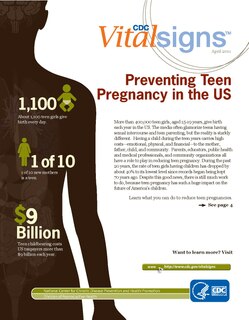
A spouse is a significant other in a marriage, civil union, or common-law marriage. The term is gender neutral, whereas a male spouse is a husband and a female spouse is a wife. Although a spouse is a form of significant other, the latter term also includes non-marital partners who play a social role similar to that of a spouse, but do not have rights and duties reserved by law to a spouse.

A wife is a female partner in a continuing marital relationship.
Marriageable age is the minimum age at which a person is allowed by law to marry, either as a right or subject to parental, judicial or other forms of approval. Age and other prerequisites to marriage vary between jurisdictions, but in the vast majority of jurisdictions, the marriage age as a right is set at the age of majority. Nevertheless, most jurisdictions allow marriage at a younger age with parental or judicial approval, and some also allow younger people to marry if the female is pregnant. Until recently, the marriageable age for girls was lower in many jurisdictions than for boys, on the premise that girls mature at an earlier age than boys. This law has been viewed to be discriminatory, so that in many countries the marriageable age of girls has been raised to equal that of boys. That age is most commonly 18, but there are variations, some higher and some lower.

Child marriage is a marriage or similar union, formal or informal, entered into by a child or youth under a certain age, typically age eighteen. Child marriage violates the rights of children and has widespread and long term consequences for child brides and grooms. It affects both boys and girls, but it is more common among girls. The legally prescribed marriageable age in some jurisdictions is below 18 years, especially in the case of girls. Even where the age is set at 18 years, cultural traditions may take priority over legislative law and many jurisdictions permit earlier marriage with parental consent or in special circumstances, such as teenage pregnancy. Comprehensive sex education can help to prevent child marriage.
Premarital sex is sexual activity practiced by people before they are married. Historically, premarital sex was considered a moral issue which was taboo in many cultures and considered a sin by a number of religions, but since about the 1960s, it has become more widely accepted, especially in Western countries. A 2014 Pew study on global morality found that premarital sex was considered particularly unacceptable in "predominantly Muslim nations", such as Malaysia, Indonesia, Jordan, Pakistan, and Egypt, each having over 90% disapproval, while people in Western European countries were the most accepting, with Spain, Germany, and France expressing less than 10% disapproval.

Forced marriage is a marriage in which one or more of the parties is married without their consent or against their will. A forced marriage differs from an arranged marriage, in which both parties presumably consent to the assistance of their parents or a third party such as a matchmaker in finding and choosing a spouse. There is often a continuum of coercion used to compel a marriage, ranging from outright physical violence to subtle psychological pressure. Though now widely condemned by international opinion, forced marriages still take place in various cultures across the world, particularly in parts of South Asia and Africa. Some scholars object to use of the term "forced marriage" because it invokes the consensual legitimating language of marriage for an experience that is precisely the opposite. A variety of alternative terms have been proposed, including "forced conjugal association" and "conjugal slavery".
Many jurisdictions have laws applying to minors and abortion. These parental involvement laws require that one or more parents consent or be informed before their minor daughter may legally have an abortion.
Adolescent sexuality is a stage of human development in which adolescents experience and explore sexual feelings. Interest in sexuality intensifies during the onset of puberty, and sexuality is often a vital aspect of teenagers' lives. In humans, sexual interest may be expressed in a number of ways, such as flirting, kissing, masturbation, or having sex with a partner. Sexual interest among adolescents, as among adults, can vary greatly, and is influenced by cultural norms and mores, sex education, as well as comprehensive sexuality education provided, sexual orientation, and social controls such as age of consent laws.

The sexuality of US adolescents includes both their feelings, behaviors and development, and the place adolescent sexuality has in American society, including the response of the government, educators, parents, and other interested groups.

Industrialized and developing countries have distinctly different rates of teenage pregnancy. In developed regions, such as United States, Canada, Western Europe, Australia, and New Zealand, teen parents tend to be unmarried and adolescent pregnancy is seen as a social issue.
The rate of teenage pregnancy in the United Kingdom is relatively high, when compared with other developed countries; the only other Western countries with higher teenage pregnancy rates are the United States and New Zealand. The rate of teenage pregnancy is higher in more economically deprived areas. A report in 2002 found that around half of all conceptions to under-18s were concentrated among the 30% most deprived population, with only 14% occurring among the 30% least deprived. The number of resultant births is presently at the lowest rate since the mid-1950s. Also found was that the most deprived areas had higher proportions of conceptions leading to a maternity.

Marriage in Scotland is recognised in the form of both civil and religious unions between individuals. Historically, the law of marriage has developed differently in Scotland to other jurisdictions in the United Kingdom as a consequence of the differences in Scots law and role of the separate established Church of Scotland. These differences led to a tradition of couples from England and Wales eloping to Scotland, most famously to marry at border towns such as Gretna Green. The legal minimum age to enter into a marriage in Scotland is sixteen years and does not require parental consent at any age.
Scots family law is the body of laws in Scotland which regulate certain aspects of adult relationships and the rights and obligations in respect of children.
Abortion in Slovakia is legal on request until 12 weeks of pregnancy, and for medical reasons at later stages. Abortion was fully legalized on 23 October 1986. Abortions were provided with restrictions in Slovakia and what is now the Czech Republic as early as 19 December 1957, but it was the 1986 law which removed the requirement of medical approval for abortions before the twelfth week of pregnancy. Girls under 16 require parental consent for an abortion, while girls aged 16 and 17 can have the procedure performed without consent but the parents still have to be notified.
According to UNICEF, child marriage is the "formal marriage or informal union before age 18," and it affects more girls than boys. In Afghanistan, 57% of girls are married before they are 19. The most common ages for girls to get married are 15 and 16. Factors such as gender dynamics, family structure, cultural, political, and economic perceptions/ideologies all play a role in determining if a girl is married at a young age.

Teenage pregnancy in the United States relates to girls under the age of 20 who become pregnant. 89% of these births take place out-of-wedlock. In the 2010s, teen pregnancy has declined almost continuously.

The marriage age in the United States is set by each state and territory, either by statute or the common law applies. An individual can marry in the United States as of right, without parental consent or other authorization, on reaching 18 years of age in all states except in Nebraska, where the general marriage age is 19, and Mississippi where the general marriage age is 21. In Puerto Rico the general marriage age is also 21. In all these jurisdictions, these are also the ages of majority. In Alabama, however, the age of majority is 19, while the general marriage age is 18. When at least one of the marriage partners is under 18, the marriage is considered a child or underage marriage, and requires “exceptional circumstances” to be permitted. This may be parental consent or judicial authorisation, and there may be other requirements. In many states, a child's marriage automatically emancipates the minor, or increases his or her legal rights beyond allowing the minor to consent to certain medical treatments.
A child or underage marriage in the United States is a marriage in which at least one party is under the age of eighteen years. Historically this has been a relatively acceptable practice, but in recent decades the practice of child marriage is contested. Today, some claim that child marriage is a form of child sexual abuse.














